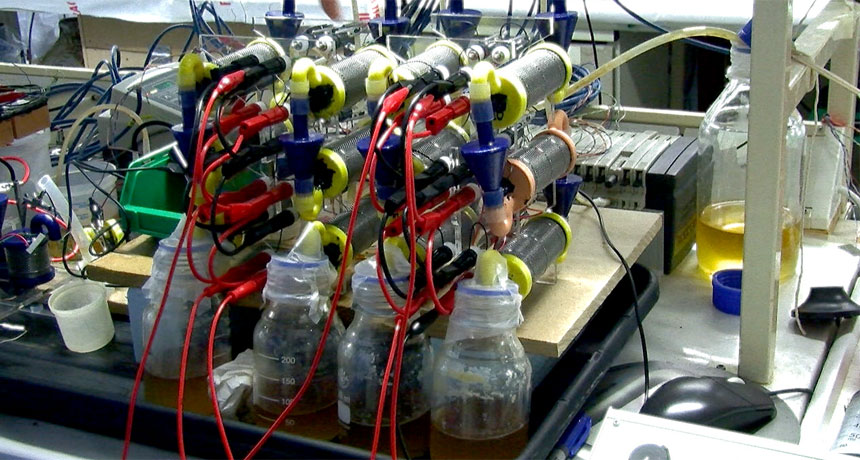Questions for ‘Powered by poop and pee?’

This stack of 12 microbial fuel cells runs on urine.
Ioannis Ieropoulos/University of the West of England, Bristol
Share this:
- Share via email (Opens in new window) Email
- Click to share on Facebook (Opens in new window) Facebook
- Click to share on X (Opens in new window) X
- Click to share on Pinterest (Opens in new window) Pinterest
- Click to share on Reddit (Opens in new window) Reddit
- Share to Google Classroom (Opens in new window) Google Classroom
- Click to print (Opens in new window) Print
To accompany feature “Powered by poop and pee?”
SCIENCE
Before Reading:
1. Most electric power in the United States is supplied by plants that run on coal, natural gas or nuclear energy. What are some disadvantages to these types of power plants? Why are some people advocating a switch to solar and wind power?
2. What happens to the waste that is flushed down a toilet? Where does it go? What happens to it?
During Reading:
1. Why is it important to keep raw sewage away from water sources?
2. Why is the GENeco Bio-Bus covered in pictures of people sitting on toilets?
3. What happens in an anaerobic digester?
4. What is a fuel cell?
5. How do wastewater treatment plants commonly use biogas? Where does their biogas come from?
6. Why does an aerobic membrane bioreactor require an input of energy?
7. How can bacteria be used to produce electricity directly?
8. What do the nanowires in Criddle’s microbial battery do?
9. Why does Criddle’s battery sometimes stop working? What needs to happen for it to work again?
After Reading:
1. Based on what you have read, how feasible would it be to power your home or school solely on human wastes? Explain your answer.
2. Some people might think it’s too gross to ride on a bus powered by human wastes or to use a cell phone powered by pee. Are they right? How might you convince them otherwise?
MATHEMATICS
The homes along the route of the GENeco Bio-Bus produce enough energy to drive the bus 4.1 million kilometers (2.5 million miles) each year. If the bus’s route is 45 kilometers (28 miles) long, how many times could the bus travel its route in that year? If the bus ran its route 21 times a day, 365 days a year, what percentage of the energy produced from the homes’ sewage would be left? Show your work.